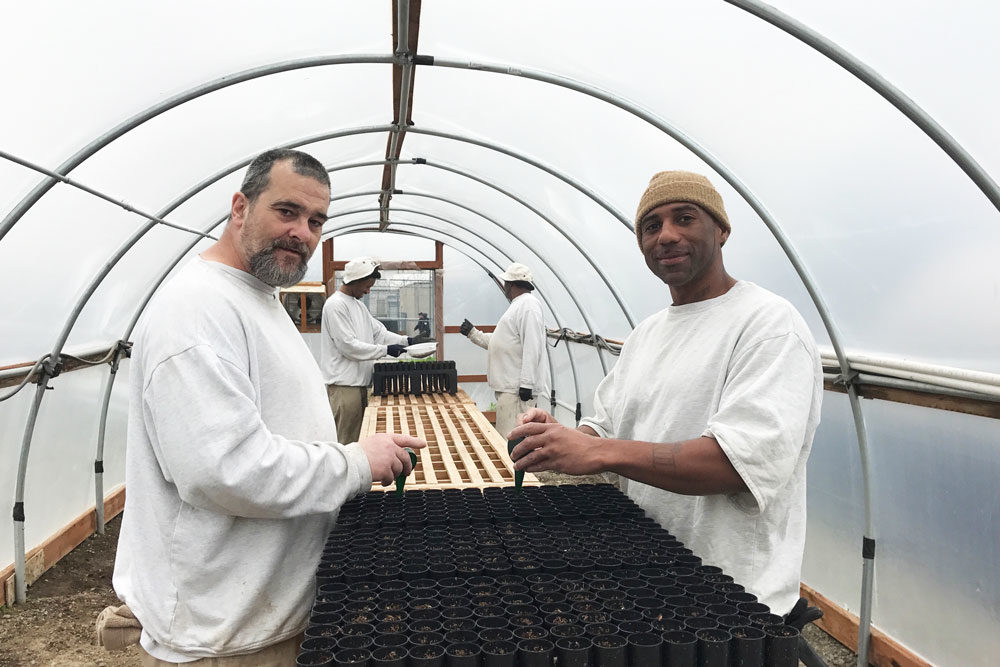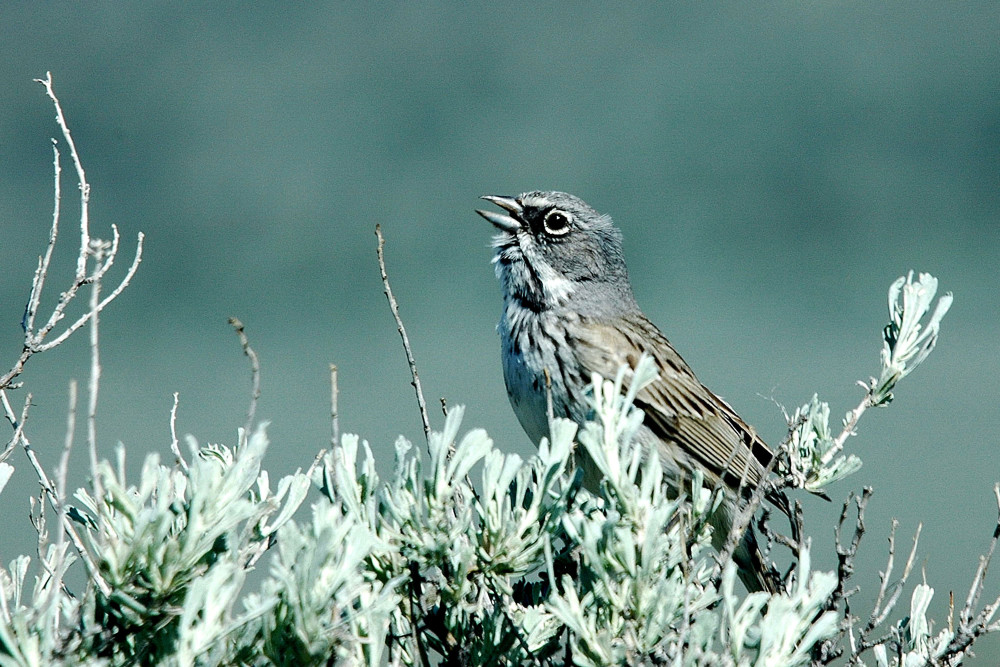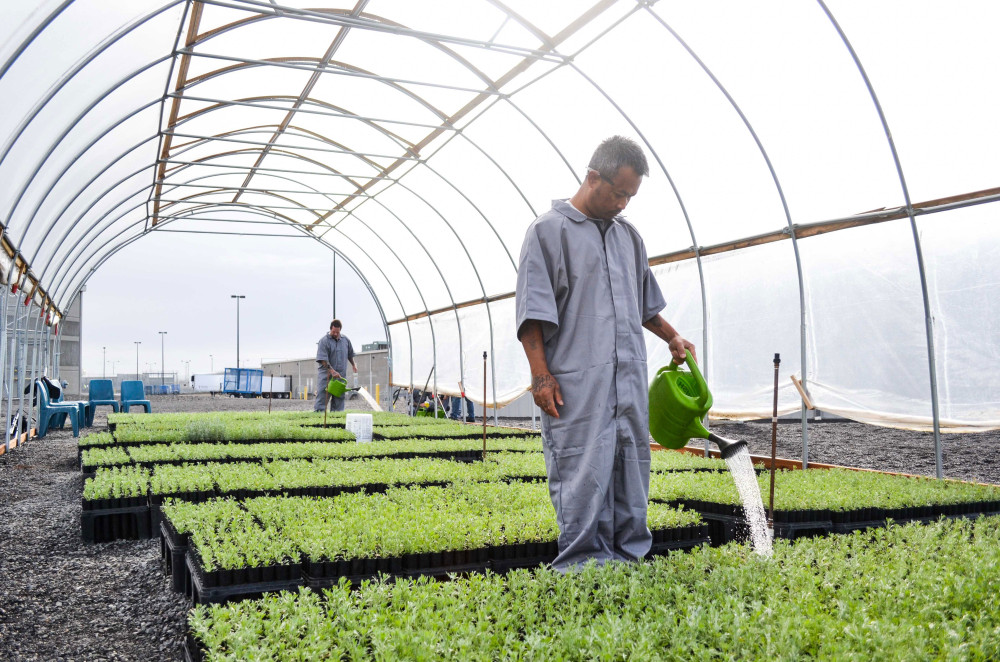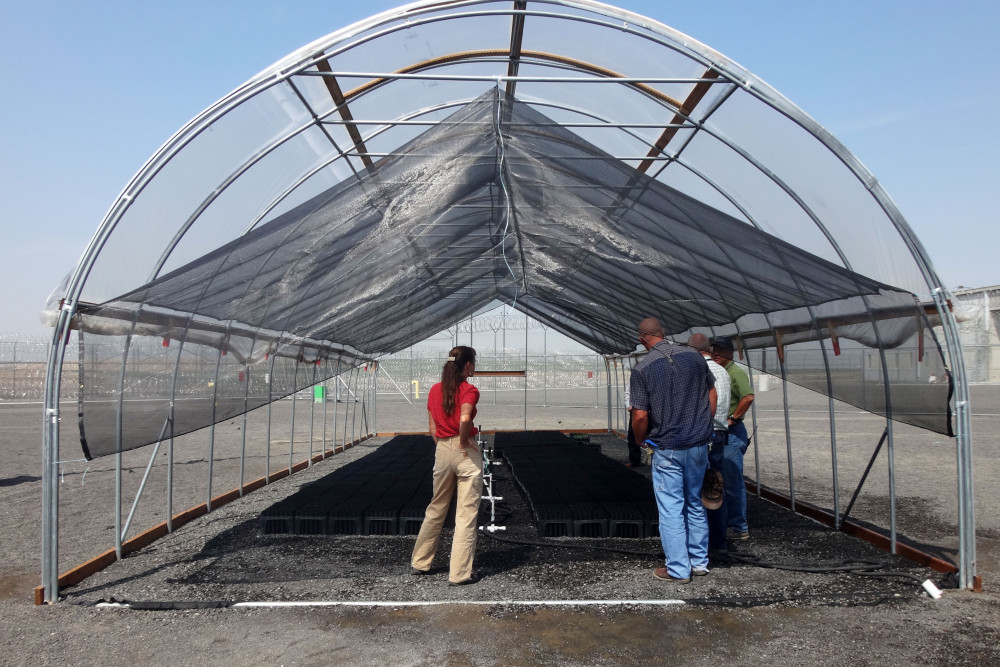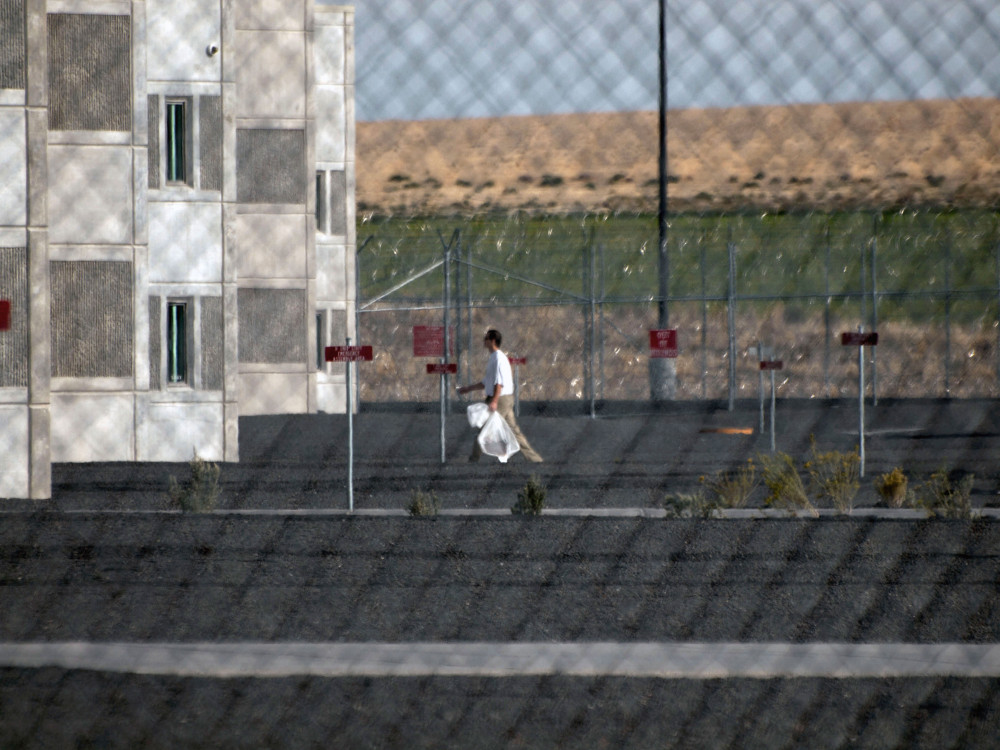
Most greater sage-grouse habitat is in the Great Basin region of Idaho, Utah, Nevada, Oregon and California, but central Washington boasts a few, glorious examples. Photo of sagebrush steppe by Rod Gilbert.
Sagebrush Conservation Nursery Programs
Plants for Sagebrush Steppe Restoration
The sagebrush-steppe nursery at Washington State Penitentiary (WSP) operates within their Sustainable Practices Lab (SPL). The SPL is an exemplary employment and training program with day-to-day supervision provided by DOC staff and SPP manager Gerry Glenn. In 2023 and 2024, 33,980 plant plugs were produced at WSP for restoration efforts. In addition to Big Sagebrush (Artemisia tridentata), nursery production expanded in the fall of 2024 to include forbs and shrubs vital to the sagebrush-steppe ecosystem. This program is possible through the support of Washington Department of Fish and Wildlife (WDFW) Washington Shrub Steppe Restoration and Resiliency Initiative and U.S. Fish and Wildlife Services (USFWS). These new species and the sagebrush will be planted out in the fall of 2025 on public lands in Eastern Washington impacted by wildfire.

A conservation technician tends young sagebrush plants growing in CRCC’s nursery. Photo by Jeff Clark, BLM.

At WSP, the conservation nursery is part of the Sustainable Practices Lab (SPL) “Green Zone,” and shares in the benefit of an experienced and highly effective SPL crew; the seeding assembly line sowed seeds for 25,000 plants in one day!! Photo by Gretchen Graber.
 A program technician recently tapped into his artistic skills to share his enthusiasm for animal welfare; he created the sage-grouse image shown here. Photo by Gretchen Graber. |
 |
Why grow sagebrush?
 A female sage-grouse in prime habitat, next to a sagebrush plant. Photo by Tom Koerner/USFWS, from https://goo.gl/nf8uEt. |
 A male greater sage-grouse struts his stuff. Photo from BLM Oregon & Washington’s photostream, from https://goo.gl/FuFeCP. |
Fifty percent of the sagebrush steppe habitat in the United States has been lost to large scale fires, conversion to other land uses, invasive cheat grass, and noxious weeds. Sagebrush habitat provides shelter and food for the greater sage-grouse plus more than 350 species of plants and animals that depend on sagebrush ecosystems for all or some of their needs. The greater sage-grouse is the largest native grouse species in North America and is a candidate for listing under the Endangered Species Act. From a 5/28/15 Bureau of Land Management (BLM) News Release:
The West is rapidly changing – with increasingly intense wildfires, invasive species and development altering the sagebrush landscape and threatening wildlife, ranching and our outdoor heritage,” said former Secretary of the Interior Sally Jewell. “As land managers of two-thirds of greater sage-grouse habitat, we have a responsibility to take action that ensures a bright future for wildlife and a thriving western economy. Together with conservation efforts from states and private landowners, we are laying an important foundation to save the disappearing sagebrush landscape of the American West.
Throughout the region, land managers are investing in habitat restoration to increase the greater sage-grouse population. On March 1, 2024, the final Washington Shrubsteppe Restoration and Resiliency Initiative Long-Term Strategy was published. The 30-year strategy focuses on the following 5 key elements: community engagement, habitat protection, habitat restoration, species management, and fire management. Learn more about the plan at Washington Department of Fish and Wildlife’s webpage and about the regional effort to conserve the sage-grouse specifically on BLM’s webpage: Greater sage-grouse program.
Blogs on Sagebrush Conservation
Collecting Sagebrush Seeds (2016)
Sagebrush in Prisons Project (2016)
Growing Sagebrush in Central Washington (2015)

This is an example of healthy sagebrush landscape in central Oregon. Photo by Joseph Weldon, Wildlife Biologist, BLM.
